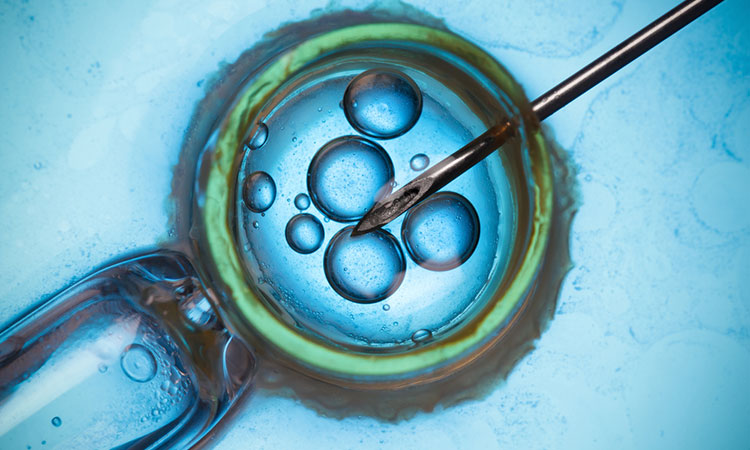
Food cravings, butterflies in the stomach, and other behaviors have some surprising sources: bacteria and neurons that flourish in our guts.
Most of us have food cravings of one kind or another, whether cookies or potato chips or ice cream or peanut butter cups. Your cravings might be based on your particular taste buds, or on conditioning based on what you grew up eating, or on a particular mood that makes you want to binge. Now scientists tell us that many cravings are actually based on tiny homesteaders in our gut: bacteria.
It’s no wonder that microscopic creatures influence our behavior. After all, about 100 trillion bacteria and other microbes live in our body. Known as the microbiome, this population serves many useful purposes. They break down food, help us fight infection, and bolster our immune system. Some bacteria, however, ask to nourish them at our expense.
According to a review in the journal Bioessays on how eating behavior is affected by gastrointestinal (GI) microbes, the microbiome can trigger cravings in a number of ways. One way is by producing chemicals such as dopamine and serotonin that affect communication between neurons. Concentrations of dopamine in typical gut-inhabiting microbes, for example, can be 100 times higher than the typical concentration of dopamine in our bloodstream. By delivering chemicals such as dopamine and the hormone norepinephrine to nerve endings in our gastrointestinal tract, these microbes can alter signals sent from the stomach to the brain via the vagus nerve. “Vagus nerve activity appears to drive excessive eating behavior in satiated rats when they are stimulated by norepinephrine,” said the review authors. “These results suggest that gut microbes that produce adrenergic neurochemicals…may contribute to overeating via mechanisms involving vagal nerve activity.”
Simply eating too many calories can also start a cycle that shifts more manipulative power to microbes. Certain bacteria can feed on calories we don’t need, which allows them to proliferate and overwhelm more human-friendly organisms. The resultant loss of diversity can change the satiety set point, inciting more overeating that further nourishes the greedy microbes and leads to obesity.
The Upside of Microbes in the GI Tract
Manipulation of the bacterial environment in the GI tract can also help defuse mechanisms that contribute to overeating. Adding probiotics to the diet, for example, tends to decrease food intake. This may occur because probiotics increase the variety of bacteria in the GI tract, which helps limit the control of any specific bacteria type over eating behavior. As the review authors note: “in a diverse microbial environment, microbes will likely expend resources on competing and cooperating…rather than on manipulating their host.”
The fact that microbes can alter eating behavior opens the door to new possibilities for redirecting consumption patterns toward a healthier state. This may be achievable through a number of strategies that alter the bacterial environment, including the use of probiotics, antibiotics, and diet changes. Researchers are also exploring the possibility of inoculating animals with microbes that have specialized nutrient requirements, which would then give the host a preference for that food. Perhaps one day humans will be able to receive such treatment to induce cravings for a healthy diet.
Can You Be Addicted to Chocolate?
Chocolate is the most common food craving, but there is really no scientific proof of a “chocolate addiction.” A true addict needs continually greater amounts of a substance to get the same good feeling. For chocoholics, the same dose usually does the job over time. And while chocolate contains substances such as phenylethylamine that can elevate mood, these substances are found in much higher concentration in other, less popular foods.
When the Stomach Talks, the Brain Listens
Bacteria aren’t the only microscopic manipulators of behavior in our stomachs. This multitasking organ also fires off signals to the brain via its own extensive network of neurons. According to Michael Gershon, chairman of the Department of Anatomy and Cell Biology at New York–Presbyterian Hospital/Columbia University Medical Center, there are 100 million neurons in this “second brain.” This arsenal far outnumbers the neuron supply in the spinal cord or the rest of the nervous system outside the brain.
Although not involved in conscious thought or decision making, the stomach brain enables the gut to make its own decisions regarding the behavior of the digestive system. And the stomach has plenty to tell the brain as well. Research shows that about 90% of the fibers in the vagus nerve carry information from gut to brain.
It turns out that “butterflies” and that “sinking feeling” in the stomach have a neurological basis. Neurons lining the stomach are filled with neurotransmitters, chemicals that help nerve cells communicate with one another. One key neurotransmitter is serotonin, which plays a major role in mood regulation. While serotonin is also found in the brain, 95% of the body’s supply is in the stomach. This abundance explains why drugs like Prozac, known as selective serotonin reuptake inhibitors (SSRIs), help elevate mood by increasing serotonin levels but may also cause stomach disturbances.
Growing interest in the stomach brain has spawned a field of study known as neurogastroenterology, which will likely reveal even more exciting findings about the stomach’s I.Q. in the future.
Click here to get inspired by Rose’s easy steps to positively change your mind


